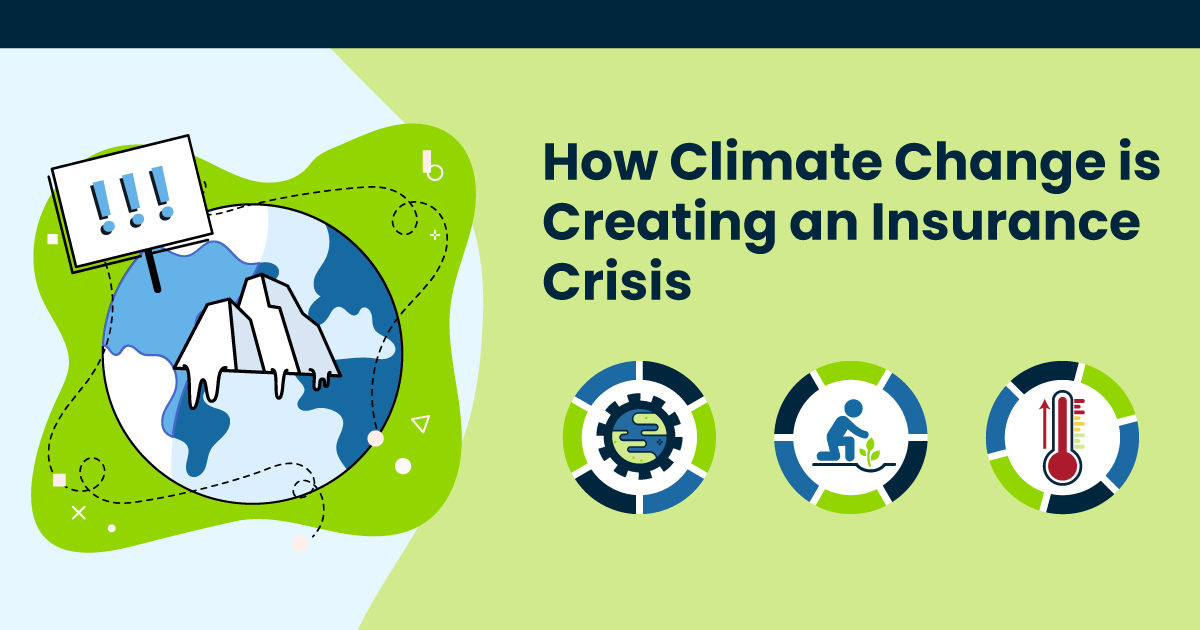The Impact Of Climate Change On Insurance Premiums
The Impact of Climate Change on Insurance Premiums
Climate change has been a pressing global issue for decades, and its effects are becoming increasingly apparent. Rising temperatures, melting glaciers, and extreme weather events are all signs that our planet is facing a significant threat. One of the lesser-known consequences of climate change is its impact on the insurance industry. As natural disasters and extreme weather events become more frequent and severe, insurance premiums are going up. In this article, we’ll explore the relationship between climate change and insurance premiums, and what it means for policyholders.
The Rising Cost of Natural Disasters

Natural disasters such as hurricanes, wildfires, and floods are becoming more frequent and costly. According to the United Nations, the number of natural disasters has increased by 15% over the past decade. This rise in disasters is causing significant financial losses, amounting to over $150 billion annually. Insurance companies are forced to pay out more claims, leading to increased costs and, ultimately, higher premiums for policyholders.
Climate Change and Extreme Weather Events
Climate change is the primary driver behind the increase in extreme weather events. Rising temperatures lead to more intense and longer-lasting heatwaves, droughts, and heavy rainfall. These conditions create an environment in which disasters are more likely to occur. For example, warmer ocean temperatures can fuel more powerful hurricanes, while melting glaciers can cause sea levels to rise, leading to coastal flooding.
The Insurance Industry’s Response
The insurance industry is responding to the changing climate by reassessing risk and adjusting premiums accordingly. Insurers are using advanced data analytics and modeling to better understand the likelihood of natural disasters and their associated costs. This information is used to set premiums that reflect the increased risk.
Increased Premiums for Policyholders
As insurance companies face higher costs due to climate-related disasters, policyholders are facing increased premiums. This can be particularly challenging for individuals and businesses in high-risk areas, who may already be paying higher premiums due to their location. For example, those living in flood-prone areas or near wildfire zones may see their premiums double or even triple.
Examples of Climate-Related Premium Increases
- Flood insurance: In 2019, the Federal Emergency Management Agency (FEMA) increased flood insurance premiums by an average of 8% to account for rising flood risk due to climate change.
- Wildfire insurance: In California, wildfire insurance premiums have increased by up to 50% in the past decade, largely due to the state’s devastating wildfires in recent years.
- Hurricane insurance: In Florida, hurricane insurance premiums have risen by an average of 20% since 2010, driven by increasing hurricane activity in the region.
The Impact on Low-Income Households
Increased insurance premiums can have a disproportionate impact on low-income households, who may struggle to afford the higher costs. A study by the National Association of Insurance Commissioners found that low-income households are more likely to drop coverage due to affordability concerns. This can leave them vulnerable to financial ruin in the event of a disaster.
Adaptation and Resilience
While increased premiums are a necessary response to the changing climate, there are steps that can be taken to reduce the financial burden on policyholders. Insurers can offer discounts for policyholders who invest in adaptation and resilience measures, such as flood-proofing their homes or installing fire-resistant roofing. Governments can also provide assistance to low-income households to help them maintain coverage.
Government Initiatives
Governments around the world are starting to take action to address the impact of climate change on insurance premiums. For example:
- Climate-resilient infrastructure: Governments are investing in climate-resilient infrastructure, such as sea walls and levees, to reduce the risk of disasters and associated costs.
- Disaster relief funding: Governments are providing disaster relief funding to support those affected by disasters, reducing the financial burden on insurance companies and policyholders.
- Climate change insurance programs: Some governments are introducing specialized insurance programs to provide coverage for climate-related disasters.
Conclusion
Climate change is having a profound impact on the insurance industry, leading to increased premiums for policyholders. As natural disasters become more frequent and severe, insurers are responding by reassessing risk and adjusting premiums accordingly. While this can be challenging for policyholders, particularly those on low incomes, there are steps that can be taken to reduce the financial burden. Governments, insurers, and individuals must work together to build resilience and adapt to the changing climate, ensuring that insurance remains accessible and affordable for all.
Recommendations for Policyholders
If you’re concerned about the impact of climate change on your insurance premiums, here are some steps you can take:
- Review your policy: Check your policy to see if you’re covered for climate-related disasters.
- Assess your risk: Understand your risk of being affected by climate-related disasters and take steps to mitigate it.
- Invest in resilience measures: Consider investing in adaptation and resilience measures to reduce your risk and potentially lower your premiums.
- Shop around: Compare insurance quotes from different providers to find the best coverage at an affordable price.
The Future of Insurance
The impact of climate change on insurance premiums is just one aspect of the insurance industry’s response to the changing climate. As the industry continues to evolve, we can expect to see new and innovative solutions emerge. From climate-resilient infrastructure to parametric insurance, the future of insurance is full of possibilities.
In conclusion, climate change is having a profound impact on the insurance industry, leading to increased premiums for policyholders. While this can be challenging, there are steps that can be taken to reduce the financial burden. By working together, governments, insurers, and individuals can build resilience and adapt to the changing climate, ensuring that insurance remains accessible and affordable for all.

Loker Morowali Informasi Lowongan Kerja Morowali dan Sekitarnya
